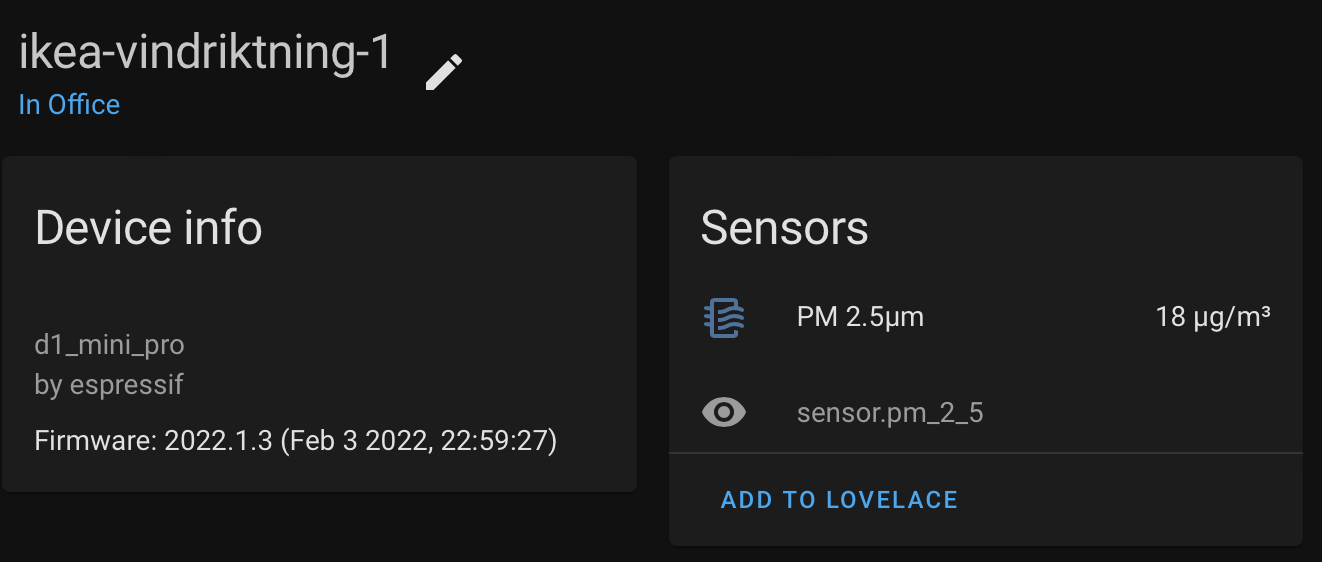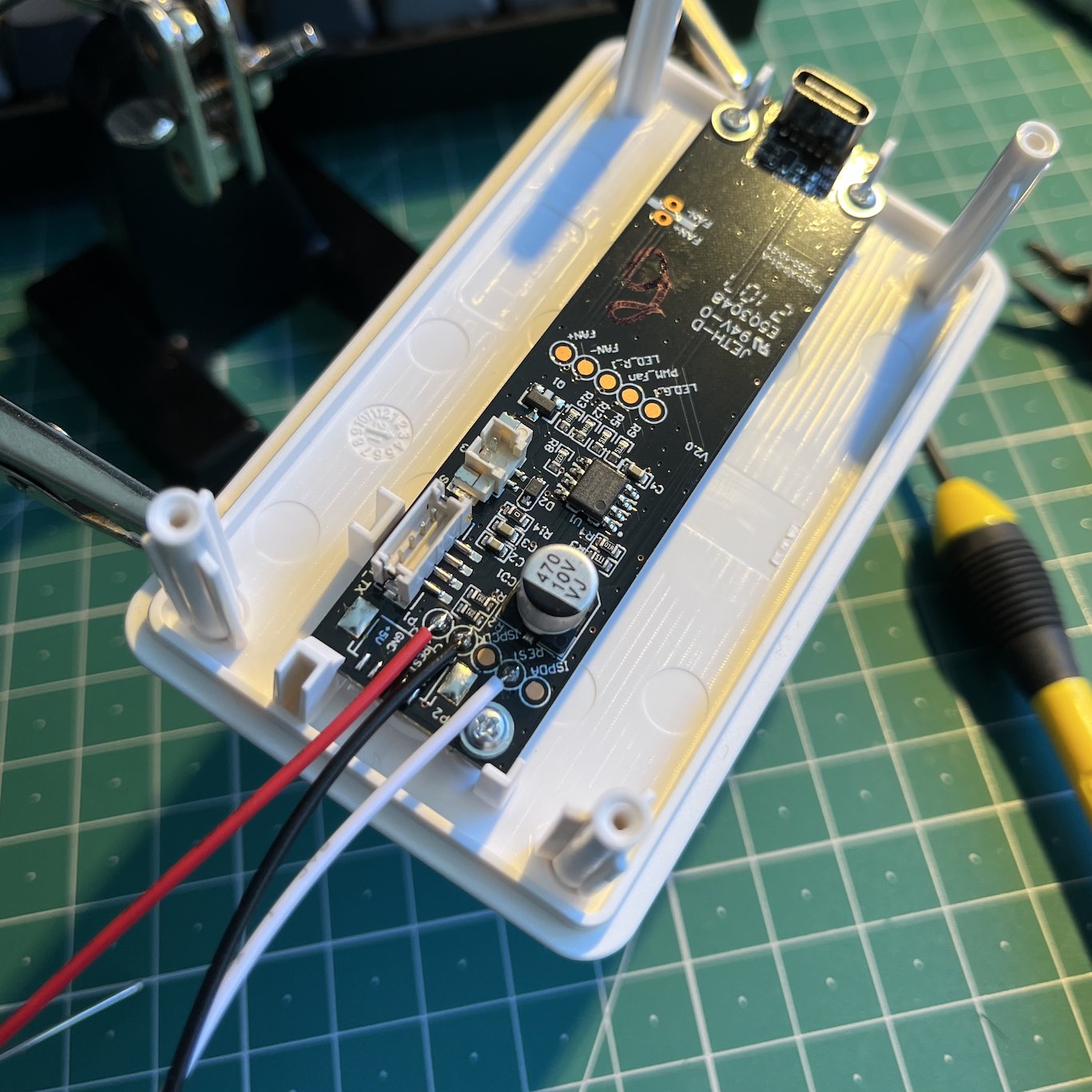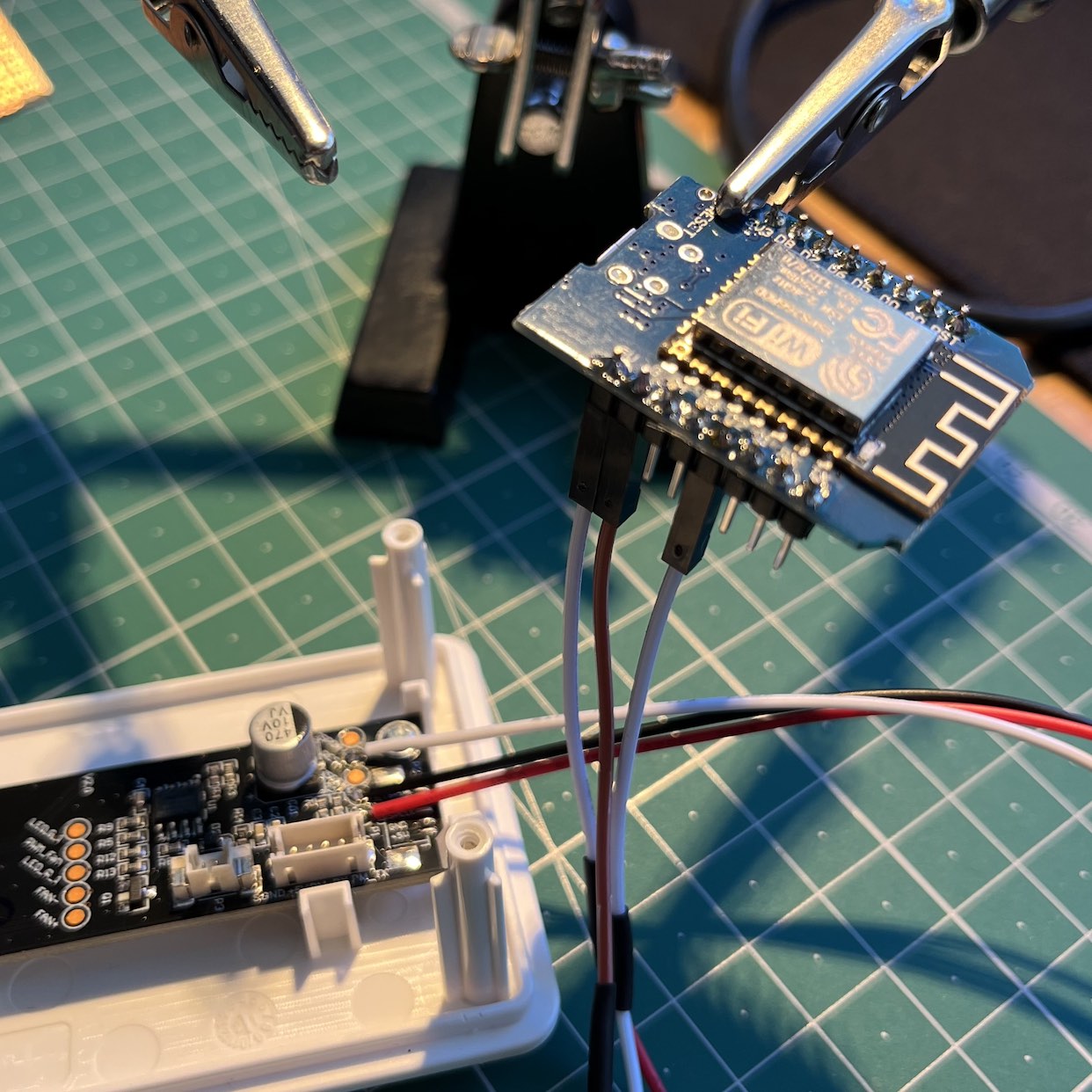|
|
||
|---|---|---|
| components | ||
| img | ||
| LICENSE | ||
| README.md | ||
| example_vindriktning.yaml | ||
README.md
ESPHome VINDRIKTNING Particle Sensor
The IKEA VINDRIKTNING particle sensor is simple and cheap, costing only $15 AUD. It's easy to attach an ESP device to three test points on the device's PCB to read the communication between the sensor and the IC on the board.
This project takes the excellent work of Sören Beye in the Hypfer/esp8266-vindriktning-particle-sensor project and incorporates it into a custom ESPHome component that can be used as an External ESPHome component.
| Device in Home Assistant | PM 2.5 over time |
|---|---|
 |
 |
Rationale
Most of the boilerplate code and configuration of the original project can be abstracted away by ESPHome. Things like Wifi configuration, OTA updates, Home Assistant auto discovery and integration and UART setup can be configured with a YAML file.
The original project contains a moving average value for the sensor, this can be replicated with a sliding_window_moving_average filter on the sensor.
Prerequisites
To attach your ESP8266 to your sensor, follow the excellent build instructions contained within the original README.
Example YAML
esphome:
name: vindriktning-pm-1
platform: ESP8266
board: d1
external_components:
- source: github://jessedc/esphome-vindriktning-particle-sensor@main
components: [ vindriktning ]
refresh: 0s
logger:
api:
ota:
password: !secret ota_password
wifi:
ssid: !secret wifi_ssid
password: !secret wifi_password
uart:
id: uart_bus
rx_pin: GPIO4
tx_pin: GPIO5 # Unused
baud_rate: 9600
sensor:
- platform: vindriktning
id: uart_vindrikning_pm25
name: PM 2.5μm
filters:
- sliding_window_moving_average:
window_size: 5
send_every: 5
Example Log
[22:07:10][D][vindriktning:031]: Received PM 2.5 reading: 15
[22:07:12][D][vindriktning:031]: Received PM 2.5 reading: 15
[22:07:33][D][vindriktning:031]: Received PM 2.5 reading: 15
[22:07:34][D][vindriktning:031]: Received PM 2.5 reading: 15
[22:07:36][D][vindriktning:031]: Received PM 2.5 reading: 15
[22:07:36][D][sensor:125]: 'PM 2.5μm': Sending state 15.00000 µg/m³ with 0 decimals of accuracy
[22:07:38][D][vindriktning:031]: Received PM 2.5 reading: 15
[22:07:41][D][vindriktning:031]: Received PM 2.5 reading: 15
[22:07:43][D][vindriktning:031]: Received PM 2.5 reading: 15
[22:07:45][D][vindriktning:031]: Received PM 2.5 reading: 15
[22:08:06][D][vindriktning:031]: Received PM 2.5 reading: 17
[22:08:06][D][sensor:125]: 'PM 2.5μm': Sending state 15.40000 µg/m³ with 0 decimals of accuracy
Build Photos
I followed the instructions to build my own ESP8266 powered Vindriktning sensor, wiring up Gnd, 5V and the single data pin then stuffing it all back into the enclosure.
| PCB with wires | Wemos D1 Mini attached |
|---|---|
 |
 |